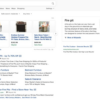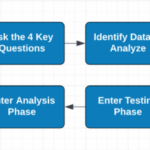Google Adsense first party cookies now support personalization, opening exciting new avenues for tailored advertising experiences. This update allows publishers to leverage user data more effectively, potentially boosting ad revenue and creating more engaging user experiences. However, it also raises questions about data privacy and the potential for misuse. We’ll explore the implications for publishers, advertisers, and users, diving into the technical implementation, impact on personalization strategies, and privacy considerations.
The core function of first-party cookies within Google Adsense has always been crucial for tracking user behavior. This update enhances that functionality by enabling more granular personalization, making ads more relevant and potentially boosting ad revenue. The shift to a more personalized approach will require a careful balance between enhancing user experience and respecting user privacy.
Overview of Google Adsense First-Party Cookies

Google Adsense first-party cookies are a crucial element in the online advertising ecosystem, enabling a more personalized experience for users and better targeting for advertisers. They allow websites using Adsense to track user behavior on their sites, enabling more relevant ad placements. This update builds on existing functionality, refining the way these cookies contribute to a more tailored user experience.First-party cookies, in the context of Google Adsense, are small pieces of data stored on a user’s browser by the website hosting the Adsense ads.
This data tracks user interactions, such as pages visited, products viewed, and clicks on ads. This information is then used to tailor the ads displayed to the user, making them more relevant and potentially increasing engagement.
Significance for Personalized Advertising
First-party cookies are essential for personalized advertising because they provide a direct link between user behavior and the ads they see. This direct connection allows for a more nuanced understanding of user preferences and needs, leading to a more tailored and engaging advertising experience. By tracking user behavior across a website, Adsense can learn what types of products or services a user is interested in, which allows for the display of ads that are more likely to be of interest to that user.
Historical Context in Google Adsense
Google Adsense has historically relied on various cookie technologies to understand user behavior and deliver targeted ads. The evolution of first-party cookies has been a key component in improving the effectiveness of these targeting mechanisms. Initially, these cookies focused primarily on basic demographics and website visits, but with the growth of online interactions, the complexity and personalization of targeting has increased.
Impact on the Online Advertising Landscape
This update to first-party cookie support significantly impacts the current online advertising landscape by providing more refined and personalized advertising experiences. Advertisers can now better target specific user segments, while publishers can leverage the insights gained from user behavior to enhance their websites’ content and offerings. This increased precision can lead to higher engagement rates and improved ROI for both publishers and advertisers.
Potential Benefits for Publishers and Advertisers
- Enhanced User Experience: More relevant ads mean users are less likely to be exposed to irrelevant or unwanted advertisements. This can lead to a more positive user experience, increasing site engagement and potentially reducing ad-blocking behavior. Users are more likely to click on relevant ads, leading to higher click-through rates and improved ad revenue for publishers.
- Improved Ad Revenue: More precise targeting generally leads to higher click-through rates and conversion rates, ultimately increasing ad revenue for publishers. Advertisers can also benefit by reaching the most relevant audiences, improving their return on investment (ROI).
- Increased Engagement: Users are more likely to engage with ads that are tailored to their interests, increasing user engagement with the content on the website.
Potential Drawbacks for Publishers and Advertisers
- Privacy Concerns: The increased tracking of user behavior raises concerns about user privacy. Publishers need to be transparent about how they use first-party cookies and obtain user consent where required. Users may become more wary of websites that engage in extensive tracking, which could potentially lead to a decrease in site visits.
- Complexity of Implementation: Implementing and managing first-party cookie strategies can be complex, requiring technical expertise and careful consideration of privacy regulations. This can be a barrier for smaller publishers who may lack the resources or knowledge to effectively utilize these tools.
Impact on Personalization Strategies
Google Adsense’s updated first-party cookies allow for more nuanced personalization. This update offers advertisers and publishers a powerful new tool to create tailored experiences for users, potentially enhancing engagement and conversion rates. The ability to collect and utilize first-party data in a privacy-respectful manner is a significant advancement.This shift represents a crucial step towards a more refined understanding of user preferences and behaviors, enabling a more personalized and effective advertising ecosystem.
It builds on previous approaches, providing a more comprehensive understanding of user interaction and facilitating a more targeted and relevant experience.
Comparison of Personalization Strategies
The table below highlights the key differences in personalization strategies before and after the update, focusing on methods, data sources, and privacy considerations.table| Feature | Before Update | After Update ||—|—|—|| Methods | Primarily relied on third-party cookies and limited first-party data. Targeted advertising often relied on broad demographic data and inferred interests. | Leverages first-party cookie data to provide more granular and specific user profiles.
Google Adsense’s new first-party cookie personalization is a game-changer, allowing for more targeted ads. Understanding how to leverage this feature effectively, however, requires a solid understanding of your competitors’ strategies. To really nail down the best approach for your own campaigns, you need to perform a thorough competitor analysis – how to do competitor analysis in digital marketing is a great resource for that.
Ultimately, this knowledge will help you tailor your Adsense strategy for maximum impact.
This allows for targeted ads based on observed user behavior and preferences. || Data Sources | Third-party cookies (often opaque and prone to inaccuracies), limited first-party data, potentially inaccurate or incomplete data from various sources. | Direct interaction with users through website features, products, and services. This creates a more comprehensive understanding of user behavior and preferences from their direct engagement with the website.
|| Privacy Considerations | Concerns about user privacy due to the reliance on third-party cookies and data collection practices that were often opaque. | Emphasis on user consent and transparency regarding data collection. Strict adherence to privacy regulations like GDPR. Increased user control over data collection and usage. |/table
Types of Personalization Possible
With first-party cookies, advertisers and publishers can now personalize experiences in far more sophisticated ways. This includes tailoring content recommendations, product suggestions, and ad placements based on demonstrable user behavior. For example, if a user frequently visits pages about gardening tools, they might see ads for gardening equipment. This level of granular personalization goes beyond simple demographic targeting.
Google Adsense’s new first-party cookie personalization features are interesting, but the recent drop in click-through rates for Gmail, possibly due to Google AI overviews google ai overviews mail online ctr drop , raises some intriguing questions. Will this impact how effectively Adsense personalization strategies perform? It’s a fascinating interplay of Google’s AI and advertising efforts, and how these first-party cookies will adapt to the changing landscape remains to be seen.
Implications for User Experience and User Privacy
The improved personalization strategies can lead to a more engaging user experience. Users are more likely to find content and products relevant to their interests, enhancing their overall satisfaction. However, this also necessitates a cautious approach to user privacy. Clear communication about data collection practices and providing users with control over their data is crucial. Transparency and user consent are essential.
Granularity of User Data Collection
Before the update, data collection was often limited to broad demographic profiles and inferred interests. This resulted in less accurate and less granular user profiles. With first-party cookies, the level of granularity significantly increases. Detailed user behavior data, including specific page views, product interactions, and browsing patterns, is now available. This enhanced granularity allows for more targeted and effective personalization, improving both the user experience and the effectiveness of advertising campaigns.
Technical Implementation and User Experience
Personalized ads, powered by first-party cookies, offer a significant opportunity for publishers to enhance their revenue streams and advertisers to reach their target audiences more effectively. However, successful implementation hinges on careful consideration of technical integration and user experience. This crucial aspect demands a thoughtful approach that balances personalization with user comfort and avoids intrusive or disruptive experiences.Implementing these new features requires a multifaceted approach, encompassing adjustments to existing advertising platforms and a focus on maintaining a positive user experience.
Publishers must navigate the technical intricacies of integration while ensuring the personalization doesn’t detract from the overall user experience.
Step-by-Step Implementation Guide
This detailed guide provides a structured approach to integrating personalized ad features. Publishers should carefully consider each step to avoid potential issues and ensure smooth transition.
- Assessment and Planning: Begin by thoroughly evaluating existing advertising platforms and identifying areas needing modification. Create a detailed implementation plan that Artikels timelines, resource allocation, and potential challenges. This planning stage is crucial for a smooth transition.
- Data Collection and Management: Establish clear guidelines for collecting user data, ensuring compliance with privacy regulations like GDPR and CCPA. Implement robust data management systems to securely store and process this information, adhering to ethical data handling practices. This crucial step is paramount for trust and user confidence.
- Ad Platform Integration: Integrate the new personalization features into the existing advertising platform. This might involve API modifications or the addition of new functionalities. Thorough testing is critical to ensure compatibility and functionality. Proper testing is key to prevent unforeseen issues.
- User Experience Optimization: Carefully consider the impact on the user experience. Ensure the personalized ads are seamlessly integrated, avoiding intrusive elements or excessive interruptions. Testing with diverse user groups is essential to gather feedback and refine the implementation.
- Monitoring and Feedback: Establish a system for tracking key performance indicators (KPIs) and gathering user feedback. Continuously monitor and adjust the implementation based on data and user insights to ensure positive user engagement. This stage allows for adaptive improvement and refinement of the process.
Technical Aspects of Integration
Successful integration requires a deep understanding of the technical aspects of the advertising platform and the intricacies of data handling.
- API Modifications: Updating APIs to support personalized ad delivery requires careful consideration to maintain compatibility with existing functionalities. This might involve modifying existing requests and responses to accommodate the new features.
- Data Security: Implementing robust security measures is paramount to protect user data. Encryption, access controls, and regular security audits are essential to safeguard sensitive information. Data security is a top priority in this process.
- Scalability: The system must be scalable to accommodate increasing user volumes and ad requests. This often involves cloud-based solutions or optimized server infrastructure to handle the potential surge in demand.
Impact on User Experience
The implementation of personalized ads should enhance the user experience for both publishers and advertisers.
- Enhanced User Engagement: Well-executed personalization can lead to increased user engagement and satisfaction by providing content tailored to individual interests. This can result in higher user retention and greater ad effectiveness.
- Improved Ad Relevance: Personalized ads are more likely to resonate with users, leading to higher click-through rates and conversion rates. This directly benefits both publishers and advertisers.
- Minimizing Intrusiveness: The key to a positive user experience is to avoid excessive personalization. Publishers should focus on subtle and unobtrusive personalization strategies.
Displaying Personalized Ads Without Compromising UX
There are several ways to display personalized ads without negatively impacting the user experience.
- Contextual Targeting: Personalization should be relevant to the content the user is consuming. Tailoring ads to the current page or article can increase their effectiveness without being intrusive.
- Frequency Capping: Limiting the number of times a user sees a particular ad prevents fatigue and maintains a positive experience. A well-balanced approach is crucial.
- Transparency and Control: Providing users with options to opt out or manage their preferences is vital for maintaining trust. Transparency fosters a more positive user experience.
Potential Challenges and Solutions
Implementing personalization features presents several challenges.
- Data Privacy Concerns: Addressing user privacy concerns through clear communication and control mechanisms is crucial for building trust.
- Technical Integration Complexity: Careful planning and thorough testing are essential to ensure a smooth integration process.
- Maintaining User Engagement: A delicate balance must be struck between personalization and user engagement to avoid negative impacts.
Advertising Revenue and Performance

First-party cookies offer a powerful new tool for publishers to personalize the advertising experience, potentially boosting revenue and improving ad effectiveness. This personalization can lead to a more engaging user experience, which can, in turn, increase user retention and overall site traffic. The key is to use this data responsibly and ethically, ensuring user privacy remains paramount.Personalized ads are more likely to resonate with users, leading to higher click-through rates and conversions.
This, in turn, benefits both publishers and advertisers, creating a win-win scenario. The ability to tailor ads to specific user interests and behaviors can significantly improve ad performance, driving revenue growth for publishers.
Potential Impact on Advertising Revenue
Personalization offers significant potential to improve advertising revenue. By tailoring ads to individual user preferences, publishers can increase click-through rates, conversion rates, and ultimately, ad revenue. This is especially true when combined with a well-defined targeting strategy. Accurate user segmentation and tailored ad messaging can dramatically enhance the effectiveness of advertising campaigns, leading to more profitable outcomes.
Google Adsense’s new first-party cookies enabling personalization is a game-changer. Understanding how to leverage this effectively requires a strong content strategy, like the one outlined in this helpful development guide content strategy a development guide. Ultimately, a well-defined content strategy will be crucial to maximizing the impact of these new personalization features in Adsense.
Improving Ad Effectiveness with Personalization
Personalization significantly improves ad effectiveness by aligning ads with user interests. Users are more likely to engage with ads that are relevant to their needs and preferences. This targeted approach fosters a more positive user experience, which can increase user engagement and lead to higher click-through rates and conversions.
Examples of Optimizing Ad Performance with Data
Publishers can use various data points to optimize ad performance. For example, analyzing user browsing history, demographics, and purchase behavior can reveal valuable insights into user preferences. This information can be used to segment users into distinct groups and create targeted ad campaigns that resonate with each segment. Furthermore, tracking user interactions with ads, such as clicks and views, can reveal what resonates most with the audience, enabling iterative improvements to ad creatives and targeting.
A/B testing different ad variations can identify which ones perform best and refine ad strategies for optimal results.
Leveraging Personalized Data for Targeted Advertising
Advertisers can leverage personalized data to target specific demographics and interests. For instance, if a user frequently visits websites about gardening, advertisers can target them with ads for gardening tools and supplies. By segmenting users based on their browsing history, purchase history, or other relevant data, advertisers can create highly targeted ad campaigns that are more likely to resonate with the intended audience.
This approach enables more efficient ad spending and improves the overall ROI for advertisers.
Potential Revenue Increases/Decreases due to Personalization
Privacy and Security Implications
The increased use of first-party cookies for personalization in Google Adsense raises crucial privacy and security concerns. Users are increasingly aware of how their online activity is tracked and used, and these concerns are paramount to maintaining trust and ensuring responsible data handling. Understanding these implications is vital for advertisers, publishers, and users alike.The collection and use of user data, while potentially valuable for enhancing user experience and driving revenue, must be handled with the utmost care.
Transparency and clear communication are essential for building user trust and maintaining a positive relationship with the online community. This section delves into the complexities of privacy, security, and legal considerations surrounding the expanded use of first-party cookies in the Google Adsense ecosystem.
Privacy Concerns
Users are concerned about the potential for data breaches and misuse of personal information collected through first-party cookies. The increased tracking and analysis of user behavior raise questions about the scope and purpose of data collection. A lack of transparency about how this data is used can erode user trust and potentially lead to a decline in user engagement with online platforms.
Data Protection Measures
Implementing robust data protection measures is critical. This includes utilizing strong encryption protocols to secure data transmission, implementing access controls to limit data access to authorized personnel, and establishing clear data retention policies. Furthermore, regular security audits and vulnerability assessments are necessary to identify and address potential risks proactively. Adherence to industry best practices and relevant data privacy regulations (like GDPR and CCPA) is essential.
Potential Risks and Vulnerabilities
Malicious actors could exploit vulnerabilities in the systems handling user data collected through first-party cookies. This includes phishing attempts, malware injections, and other cyberattacks designed to steal or manipulate user information. Robust security measures, including regular software updates and employee training on cybersecurity best practices, are vital in mitigating these risks. The use of multi-factor authentication and regular password changes are essential to protect user accounts.
Building Trust through Transparency
Transparency in data collection and usage practices is crucial for building and maintaining user trust. Clear and concise privacy policies that explain how data is collected, used, and shared should be readily available to users. Open communication about the purpose of data collection and the potential benefits to users can foster a positive relationship between advertisers, publishers, and users.
Examples of transparent practices include clearly labeling ads based on user behavior and providing users with options to opt-out of certain data collection practices.
Legal Implications and Compliance, Google adsense first party cookies now support personalization
Adherence to relevant data privacy regulations is mandatory. Failure to comply with regulations like GDPR and CCPA can lead to substantial fines and reputational damage. Understanding the specific requirements of these regulations and developing a robust compliance framework are essential to ensure legal compliance and maintain a positive public image. Consult with legal professionals to ensure adherence to all applicable laws and regulations.
This includes developing mechanisms to allow users to access, modify, and delete their data.
Future Trends and Predictions
The evolution of Google Adsense first-party cookies and their integration with personalization strategies marks a significant turning point in the digital advertising landscape. This shift promises to revolutionize how advertisers target users and how users interact with online content, leading to more sophisticated and tailored experiences. Predicting the future trajectory of these advancements requires careful consideration of emerging trends, potential impacts on user expectations, and the long-term implications for the entire ecosystem.
Potential Development of Personalization Features
Google Adsense’s enhanced personalization capabilities are poised to move beyond basic demographics and interests. Future iterations will likely incorporate more nuanced data points, such as user behavior patterns, contextual information (e.g., location, time of day), and even real-time interactions with ads. This will allow for highly targeted and dynamic ad experiences, reflecting individual user preferences in a more sophisticated way.
Imagine ads for hiking gear appearing when a user searches for trails near their location, or tailored product recommendations appearing on websites based on past browsing history. This level of precision promises to increase the effectiveness of advertising campaigns and provide more relevant content for users.
Impact on the Digital Advertising Industry
The increasing sophistication of personalization will undoubtedly reshape the digital advertising industry. Advertisers will need to adapt their strategies to leverage the enhanced data points available, potentially leading to more specialized ad agencies and greater emphasis on data analysis. This trend could also lead to the emergence of new advertising formats and technologies designed to cater to the specific needs of personalized experiences.
The industry will face challenges in ensuring data privacy and security, but the potential rewards in terms of improved ad relevance and user engagement are substantial.
Emerging Trends in Personalization
Several emerging trends in personalization will shape the future of Google Adsense. These include:
- Contextual Personalization: Ads will increasingly consider the context of the user’s interaction, such as the website they are visiting, the time of day, or the device they are using. This will allow for highly tailored ad experiences that are relevant to the specific situation, improving user engagement and reducing irrelevant interruptions.
- AI-powered Personalization: Artificial intelligence will play a crucial role in analyzing vast amounts of user data to predict and personalize user needs and preferences. This will result in more accurate and proactive recommendations, potentially revolutionizing how users interact with digital content.
- Dynamic Creative Optimization: Ads will be tailored in real-time to individual users, based on their current behavior and context. This will ensure that the message is not only relevant but also engaging, maximizing the potential for conversions and user satisfaction.
Impact on User Expectations and Preferences
The shift towards personalized experiences will likely influence user expectations and preferences. Users will likely demand more relevant and engaging content, leading to a decline in tolerance for irrelevant or intrusive ads. As users become accustomed to personalized recommendations and targeted content, they may expect similar levels of customization across all digital platforms. Understanding and responding to these evolving user expectations will be critical for both advertisers and publishers.
Long-Term Implications
The long-term implications of this update are significant. The ability to deliver highly personalized advertising experiences will likely lead to increased ad revenue for publishers and advertisers. However, ensuring user privacy and data security will be paramount. Furthermore, there is a potential for a widening gap between users who embrace personalization and those who find it intrusive or invasive.
Careful consideration of these implications will be essential for maintaining a healthy and sustainable digital ecosystem.
Epilogue: Google Adsense First Party Cookies Now Support Personalization
In conclusion, Google Adsense’s integration of first-party cookie personalization offers significant potential for both publishers and advertisers. However, careful consideration of privacy implications, technical implementation, and user experience is crucial. The future of online advertising hinges on striking a balance between personalization and user trust. By understanding the potential benefits and drawbacks, we can navigate this exciting new landscape responsibly and effectively.






